Growing herbs indoors is a great way to continue gardening right through the coldest days of winter. And all while giving incredibly fresh flavor to all kinds of dishes, soups, salads and more!
Best of all – it’s easy to do, and doesn’t require a lot of space or special equipment. In fact, all you need is a sunny windowsill and good soil, and you’re ready to go
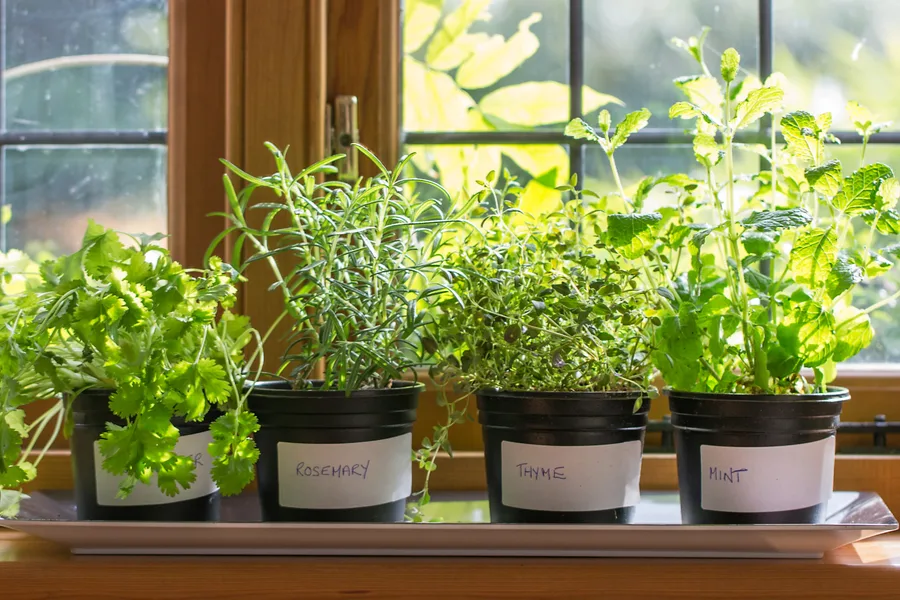
Here is a look at how to set up your own indoor herb garden, along with 5 perfect herbs to try growing inside.
How To Grow Herbs Indoors
Success with growing indoor herbs comes down to 3 important factors. Having the right lighting, using the right soil, and selecting herbs that grow well indoors.
For soil, ordinary garden soil is simply too heavy for herbs to survive and thrive indoors. Select a high quality seed starting or potting soil that is lightweight and full of nutrients. Product Link : Espoma Organic Potting Soil

As for the size of the pot, although 4″ pots will work, 6″ pots are the ideal size. They allow enough soil for nutrients while taking up minimal space.
For lighting, select a sunny window in a warm room. The best window to choose is a southern facing window for maximum lighting. And as for the best herbs to choose, here are five of our favorites for indoor growing:
5 Great Herbs To Grow Indoors
#1 Oregano
Oregano can be grown with ease indoors from an existing plant, or by direct seeding. This perennial is a fast grower, and thrives when placed in a warm, sunny window.
Oregano requires fertile soil, so using a larger pot will help it find enough nutrients to say strong all winter.
If growing from direct seed, plant 6 to 8 seeds 1/4″ deep in each 6″ pot. As the seedlings germinate, thin to 3 to 4 plants to allow for thick growth. Oregano requires rich soil for strong growth, so adding in compost or worm castings to the mix can help create strong early growth.
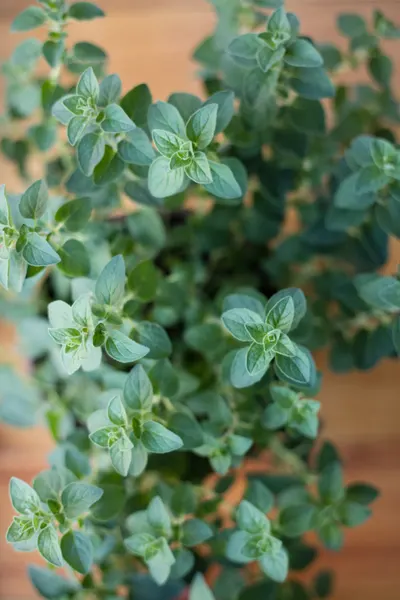
Water well, but allow the soil to dry out in between waterings to keep the roots from rotting out. If the plant becomes a bit wild with growth, you can cut it back to force tighter growth.
Oregano also dries easily and is perfect for using to create your own home-made Italian seasoning. To create, just blend equal parts of dried parsley, oregano, basil, thyme and rosemary.
#2 Chives – Growing Herbs Indoors
Chives are one of the tiniest members of the onion family, but do they ever have big flavor! And they also happen to be a breeze to grow indoors.
Although they can be grown from seed, they are even easier to establish from existing transplants. If you grew chives outdoor this year, simply take a small start and pot up with fresh potting soil.

If starting from seed, scatter seeds (20 to 30) over the surface of a 6″ pot. Next, cover with 1/4″ of potting soil and moisten lightly. Place in a sunny window and keep soil moist until the seeds germinate.
Their uses are many, but chives are probably best known for chopping up and sprinkling on baked potatoes. They also add a great onion flavor to soups and dry rubs. Chives can also be placed with their stems and blooms in tact in a container of olive oil to help infuse it with their flavor.
#3 Parsley – Growing Herbs Indoors
Parsley is so much more than just a garnish for plates. With it’s slightly pepperish flavor and bright green stems and foliage, it’s chock full of vitamins. It also adds big flavor to soups, meat and all types of dishes.
To grow, sow 8 to 12 seeds 1/4″ deep in a 6″ pot, scattering them evenly around the surface of the container. Moisten the soil and place in a warm area to help hasten germination.
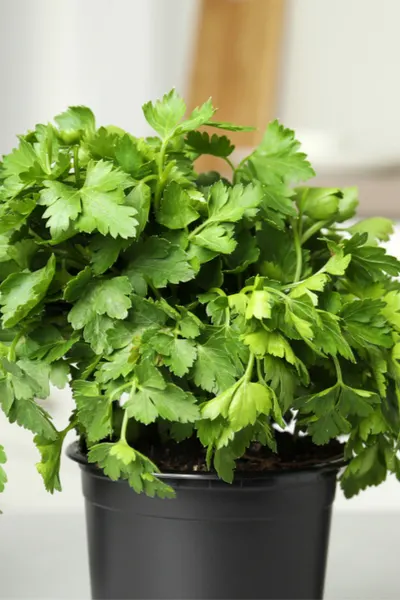
Once the seeds have started to germinate, place in a sunny, southern facing window. Allow the soil to dry out between watering, and cut and use as needed. Parsley will regrow many times from the same stock, so a single plant is usually enough to last all winter.
Parsley, much like all herbs, can benefit from a bit of organic fertilizer from time to time. Using a light dose of compost tea once a month will help stimulate strong growth. (See : How To Make Homemade Compost Tea)
#4 Mint – Growing Herbs Indoors
There are a vast array of mint types available that can bring all kinds of flavor and aromas indoors.
From peppermint, spearmint and even chocolate mint, mints are fantastic to use as a garnish or the main ingredient in your favorite teas and drinks. As an added benefit, mint fills the surrounding air with its amazing fragrant scent.
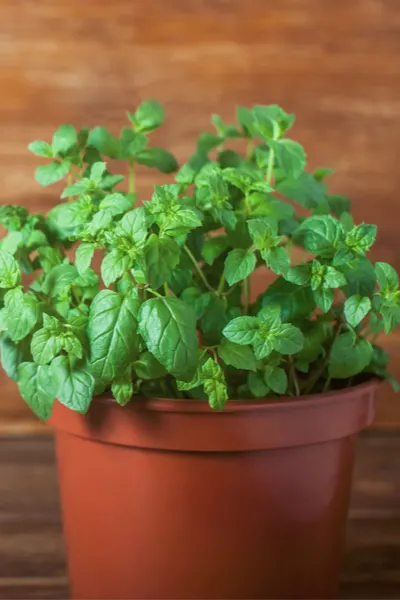
Mint can be grown by dividing an existing outdoor plant, or directly from seed. When growing from seed, scatter 8 to 10 seeds in a 6″ pot, 1/4″ deep in the soil.
As seedlings emerge, thin plants to about 4 seedlings per 6″ pot for best results. Mint is extremely drought resistant, so water only as the soil dries out. Harvest as needed, pinching back wild growth to keep the plant manageable.
#5 Thyme – Growing Herbs Indoors
And rounding out our list of perfect herbs to grow indoors is thyme.
Thyme is a slow growing, low-maintenance herb that is easiest to grow from an existing transplant. Although it can be started from seed, seeds can be slow to germinate, and difficult to keep alive as seedlings.
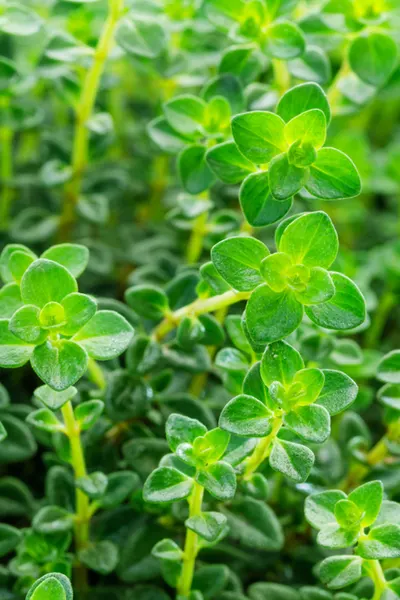
The good news is many greenhouses and plant stores carry starts of time year round for bringing home and growing indoors.
When dividing from an existing plant, take starts from the outer edges of an existing plant. These areas easily adapt to potting, and will be more tender and less woody.
Other Herbs To Try, And A Few That Can Be Difficult – Growing Herbs Indoors
Other herbs that perform well indoors are Rosemary, Sage, Tarragon and Lemon Balm. Much like the 5 herbs listed above, they require little care other than watering and a sunny, warm window.
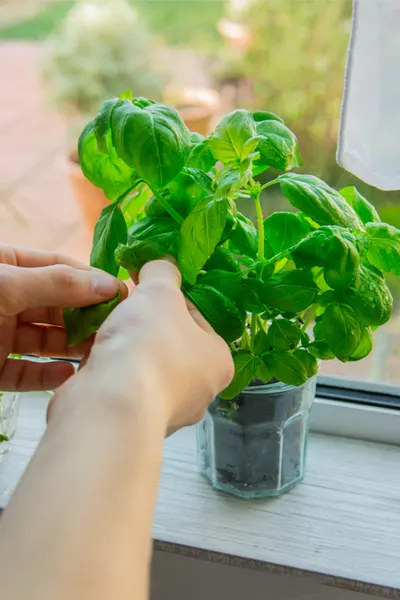
Two herbs that can be more difficult to grow are basil and cilantro. Although they are beloved by gardeners, they require a lot of light and heat, and can perform poorly unless grown under plant lights or a very sunny window.
Here is to planting and growing a few herbs indoors this winter, and enjoying fresh flavor as the snow flies! Happy Winter Gardening – Jim and Mary
